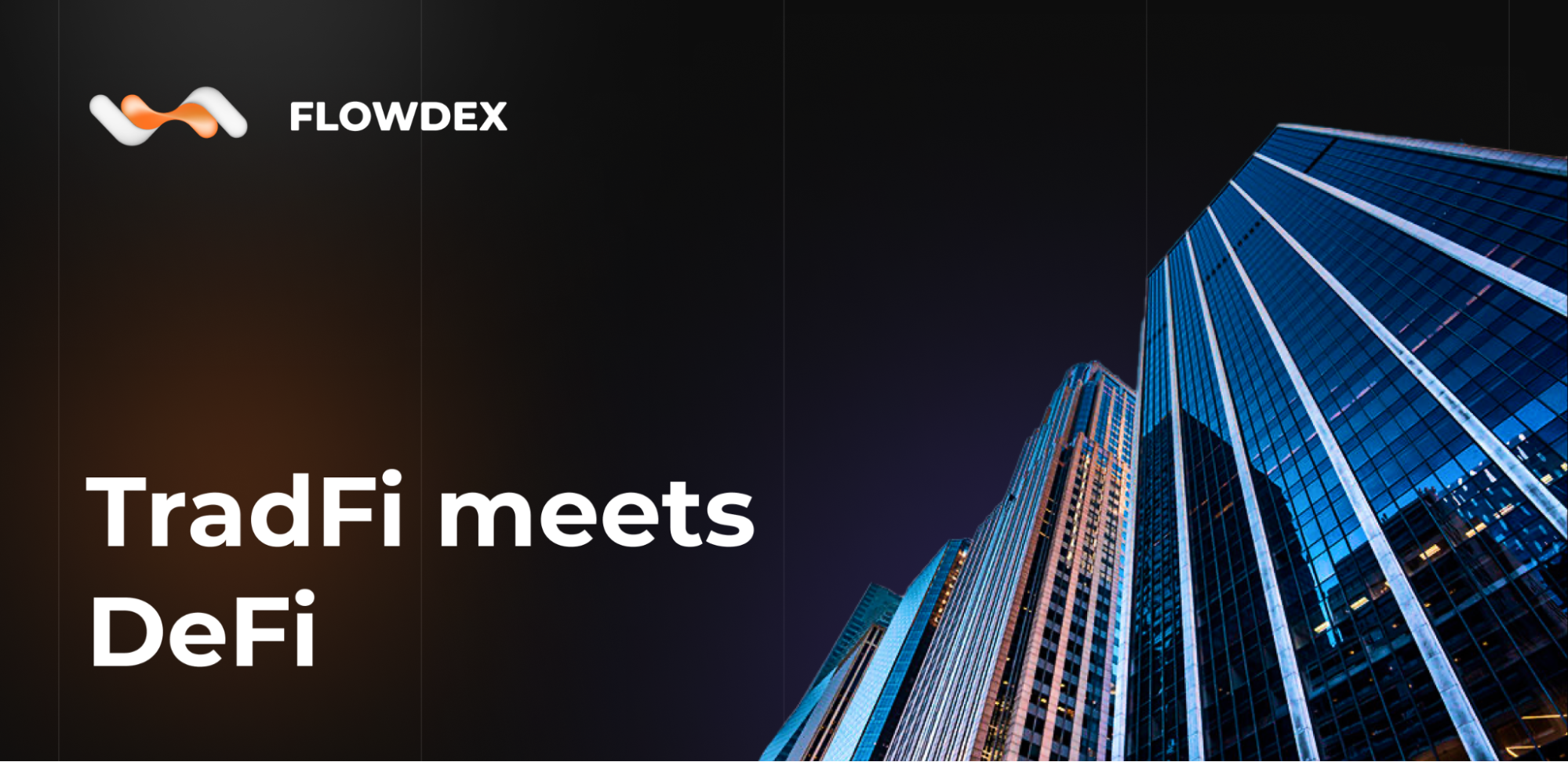Hey FlowDex community,
Imagine holding a share of a New York skyscraper or a slice of U.S. Treasuries—directly inside your DeFi wallet. Welcome to the world of Real-World Assets (RWAs), where traditional finance meets onchain innovation. This is more than a trend; it’s a structural shift in how capital flows between TradFi and DeFi.
Let’s break down the key moves behind this growing phenomenon.
What are RWAs really about?
RWAs tokenize real-world assets like real estate, commodities, and government bonds on the blockchain. This makes them liquid, tradable 24/7, and accessible to anyone, anywhere. No more gatekeepers. No need for $5 million minimums or endless paperwork. You could literally own a piece of a building or a bond yield stream with a couple of clicks — and move it like any other token.
TradFi giants are moving fast
RWAs are no longer a DeFi niche. The market already hit $17.6B and is on track to reach $10 trillion by 2030. Yes, trillion. In just the past year, the sector grew by 90%, led by tokenized credit markets and U.S. Treasuries.
Meanwhile, Wall Street isn’t watching from the sidelines anymore. BlackRock, Goldman Sachs, Franklin Templeton — they’re all already here. Larry Fink (BlackRock’s CEO) is even pushing regulators to fast-track tokenized stocks and bonds. Their mission? Make markets global, 24/7, and frictionless.
Case in point: BlackRock’s BUIDL fund now allows institutions to earn U.S. dollar yields in a tokenized form with instant settlement and flexible custody. Other big names like Hashnote, Paxos, and Franklin Templeton are launching similar products.
DeFi players aren’t sitting still either
While TradFi enters the space, DeFi protocols are building the pipes. Here are some leaders integrating RWAs into their yield strategies:
• Sky (formerly Maker) was early to RWAs during the 2021 bear market, securing real-world yield when onchain rates were scraping the floor.
• Usual is offering tokenized U.S. Treasury exposure through Hashnote’s USYC, adding community governance via its native USUAL token.
• Ondo Finance is scaling tokenized Treasuries with its OUSG token while working on Ondo Chain, a hybrid blockchain for institutions entering crypto.
• Ethena combines DeFi and TradFi with its synthetic stablecoin USDe and its collateral reserve USDtb, backed by tokenized U.S. Treasury bills.
For DeFi users, RWAs introduce a more stable yield alternative—one less volatile than native crypto assets, but still onchain.
Trojan horse or opportunity?
RWAs aren’t without risks. Unlike pure DeFi assets, they rely on offchain infrastructure—custodians, legal frameworks, and regulatory oversight. Some argue RWAs compromise on decentralization. Others see them as the key to unlocking trillions in capital stuck in traditional systems. Regardless of where you stand, RWAs are not going away. TradFi and DeFi are converging. The only question is: will you be early enough to ride the wave?
Stay sharp. FlowDex is already watching this space closely.
— The FlowDex Research Team 🚀

